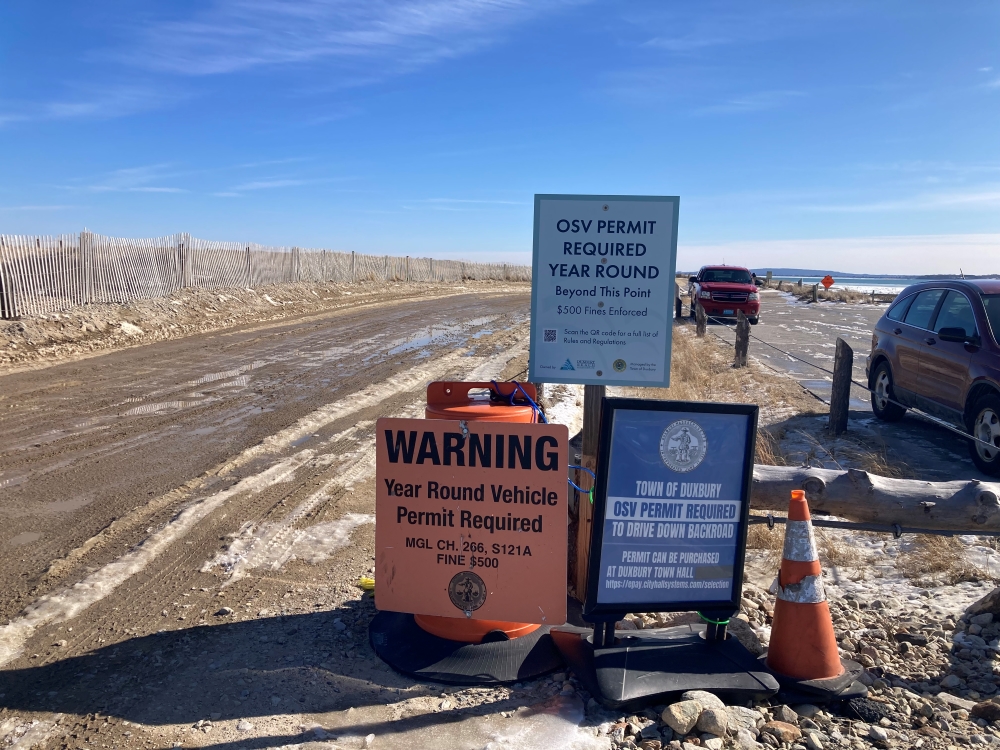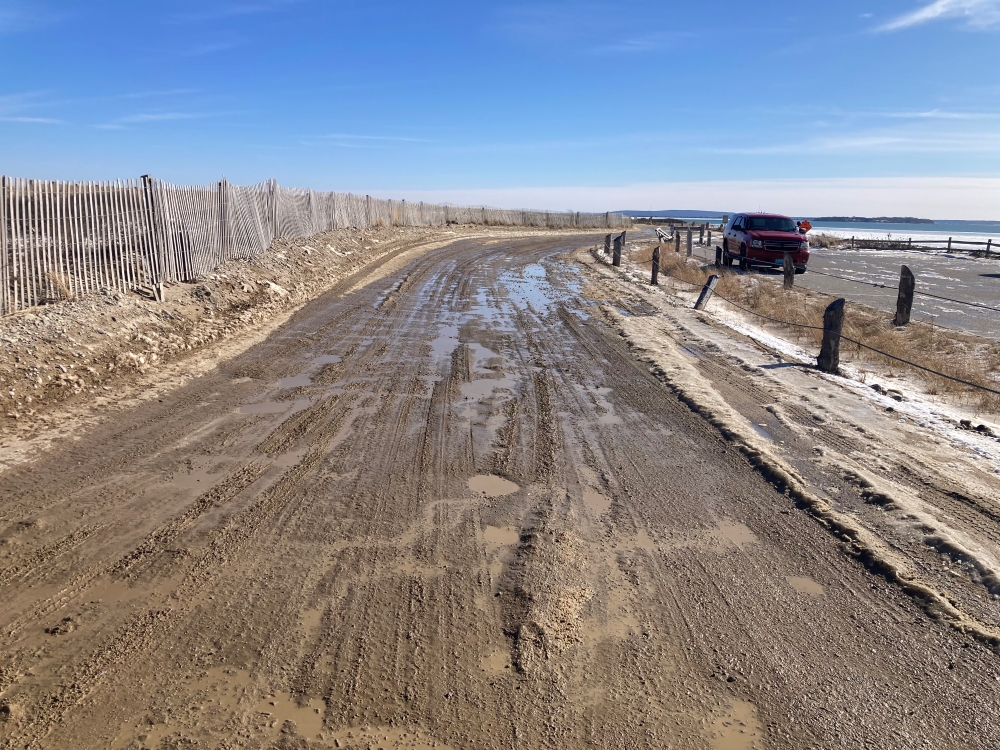As a newcomer to Plymouth, I’ve been studying maps of the town as I try and get my bearings. I’ve long been fascinated with maps, and especially geographic oddities.
For example, only two counties in the United States have discontiguous parts. Norfolk County, Massachusetts is one. Brookline and Cohasset are both part of Norfolk County, but neither is connected to any other part of it, orphaned if you will from the rest of the county. (St. Martin Parish in Louisiana is the other.) There are also several non-island parts of the United States similarly orphaned that require passage through Canada unless you’re traveling by boat.
It may come as no surprise to anyone who has lived around here a while, but I was surprised and delighted to discover Plymouth has such an orphan – Saquish, at the far southern tip of the spit of land that is Duxbury Beach. It comprises a headland, Saquish Head, and a beach, Saquish Neck. All of Saquish – a Wampanoag word that means “an abundance of clams” – is private property. There are several dozen cottages out there, but no public utilities.
Look at a modern map and the obvious question is: Why is Saquish part of Plymouth and not Duxbury? In 1620, Duxbury and Saquish were part of Plymouth Colony. In 1627, when Duxbury was incorporated, Saquish, at the entrance to Plymouth Harbor, was an island. The boundaries of Duxbury weren’t finalized for more than a decade after that, by which time a colonial court had decreed Saquish and the adjoining Gurnet Point parts of Plymouth. At the time, Saquish would not have appeared, as it does today, as a logical part of Duxbury. But by the 1770s the tides, time, and shifting sands had conspired to connect this tiny piece of Plymouth to the barrier island that comprises Duxbury Beach.
Who, I wondered, answers the bell when there’s a medical emergency or fire call from Saquish, which can be about one-hour drive from Plymouth center? Neil Foley, Plymouth’s fire chief, said the town has a mutual aid agreement with Duxbury. When help is needed at Saquish or the Gurnet, Duxbury sends the “appropriate apparatus” and personnel, he said, while Plymouth sends an engine to Duxbury in case it’s needed while Duxbury’s fire department is responding to the call.
Foley says there are, on average, several such calls a month, with more, naturally, happening in the warmer months.
Since there are at least three retired firefighters on the Saquish Beach Land Trust board, they can probably handle minor emergencies themselves.
It’s a little different when a call requires a police response. According to Capt. James LeBretton, the Plymouth Police Department’s operations chief, unless it’s a true emergency the department will send an officer in a four-wheel drive vehicle, a trip that takes about 30 minutes “with lights and siren” on. (When time is of the essence the Duxbury Police Dept. will respond.)
“We don’t get many calls to go out there, about a half dozen a year,” says LeBretton, “and usually it’s something like a party on the beach or loud music. Typically, we schedule an officer to be there on the Fourth of July, too.”
Because the area is private, trespassers who arrive by boat are also a reason for the occasional call. “It’s another world out there,” adds LeBretton. “The beach is pristine.”

Shortly after learning about Saquish, I decided to drive to it with my dogs, Tot and Salina, in tow, though there were several hints that it might not be a great idea, starting with the fact that I drive a small, low-slung, two-wheel drive convertible.
Foley suggested that a four-wheel drive vehicle is advisable, given that the route is sand all the way. LeBretton sounded the same note.
According to “The Duxbury Beach Book,” published by the Duxbury Beach Reservation Inc., the six-mile drive to Saquish from Powder Point Bridge, which connects the mainland and Duxbury Beach, can be rugged because the only road is “alternately thick with sand traps or deeply rutted.” The Saquish Beach Land Trust website also seems designed to scare off the occasional tourist like me: “The ONLY property you can access is YOUR property (if it is even accessible),” it reads. “The ONLY property you can park on is YOUR property (if it is even accessible). The ONLY property you can sit on and use is YOUR property (if it is even accessible).”
Did I mention Saquish is not always accessible?
After reading this, I was pretty sure there wouldn’t be a sign declaring, “Welcome to Saquish: Make Yourself Comfortable,” to greet us on arrival, if indeed we arrived at all. But it was Valentine’s Day, and I figured no one would much mind my coming out to take a gander in mid-winter.
So, undeterred, undaunted, vehicularly underprepared and armed with my AAA card, cellphone, a few provisions, several excuses, and the knowledge that the Duxbury Fire Department was standing by in case of emergency, we sallied forth, north to Marshfield in our attempt to reach Saquish. (Powder Point Bridge is undergoing repairs and will be closed until the end of March so we needed a work-around through Marshfield.)
Just north of the beach side of Powder Point Bridge the anticipation of adventure ahead ran headlong into the long arm of the law in the person of a genial man in a large pick-up truck who identified himself as a Duxbury Beach ranger. Without an invitation from a Saquish or Gurnet property owner, I could go no further. He told me there are a few year-round residents who likely would not welcome me poking around. And he seemed incredulous that anyone would want to go out there anyway, as if there was nothing at all to see. All this, of course, only heightened Saquish’s aura of a place apart, and stiffened my resolve to find a way out there. I’m trying to wrangle an invitation.
Stay tuned.
Peter Zheutlin – a freelance journalist who has written frequently for The Boston Globe, The Christian Science Monitor, and many other publications – brings the perspective of a Plymouth newcomer to the Independent. He is the author or co-author of nine books, including the New York Times bestseller “Rescue Road: One Man, Thirty Thousand Dogs, and a Million Miles on the Last Hope Highway.” Zheutlin can be reached at pzheutlin@gmail.com.

